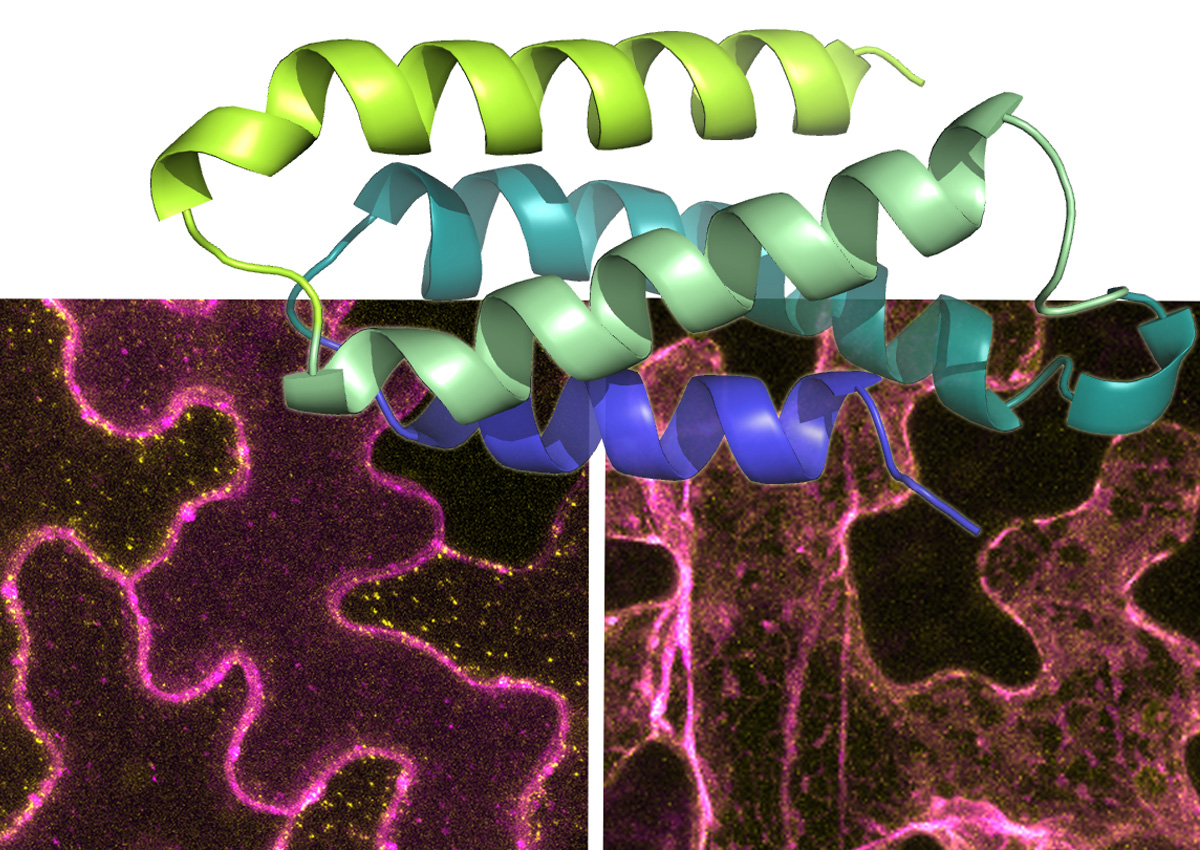
Plant Immune Proteins Kill Cells to Defend against Pathogens
June 23, 2021| |
Jeffrey Dangl and his research team at the Howard Hughes Medical Institute (HHMI) have discovered the mechanism that plants use to self-destruct in order to survive.
Plant cells self-destruct to survive. When they detect a pathogen, they set off a chain reaction that ultimately destroys them, preventing the disease from spreading. Dangl's team discovered the mechanism behind this self-destruction. They found that plant defense proteins cluster together to pierce the cell membrane, opening a channel into the infected cell. Calcium then floods in, ultimately killing the cell.
The team studied NLR proteins that detect specific pathogen molecules. They used x-ray crystallography to take detailed pictures of the NLR protein's structure. They then made targeted mutations to the protein, to see how changes in various places affected its function. The team tested different versions of the protein and how they behaved in cells and lab dishes and pieced together a picture of its mode of action.
They found that in the presence of a pathogen, NLR proteins merge into a mega-protein. Part of the protein forms a funnel-like structure that pokes into the membrane of an infected cell, creating a channel that lets calcium into the cell. Because high levels of calcium are toxic, an influx can mean death for the cell.
For more details, read the article on the HHMI website.
| |
You might also like:
- Researchers Solve Riddle of Plant Immune System
- Researchers Map Plant Immune System
- Researchers Discover Vaccine to Strengthen Plant Immune System
Biotech Updates is a weekly newsletter of ISAAA, a not-for-profit organization. It is distributed for free to over 22,000 subscribers worldwide to inform them about the key developments in biosciences, especially in biotechnology. Your support will help us in our mission to feed the world with knowledge. You can help by donating as little as $10.
-
See more articles:
-
News from Around the World
- Could Gene Drive Protect Nature?
- Kenya National Biosafety Authority Approves Genetically Modified Cassava
- Bioactive Packaging Keeps Strawberries Fresh
- Plant Immune Proteins Kill Cells to Defend against Pathogens
- Pakistan's Government Committed to Develop Agriculture for Food Security
- Researchers Report Resequenced Vietnamese Rice Genome
- Award-winning Purple Tomato to be Released in China in Disney Packaging
- EFSA Publishes Scientific Opinion on Herbicide Tolerant Oilseed Rape 73496
- Genetics Allows Selection of Cattles that Produce Less Methane
-
Research Highlights
- More Olive Genomes Identified by Scientists
- Experts Tackle Induced Mutagenesis in Date Palm Breeding
-
Plant
- Study Finds Gene Editing in Cattle Produces No Off-Target Mutagenesis
-
Read the latest: - Biotech Updates (December 17, 2025)
- Gene Editing Supplement (December 17, 2025)
- Gene Drive Supplement (February 22, 2023)
-
Subscribe to BU: - Share
- Tweet

